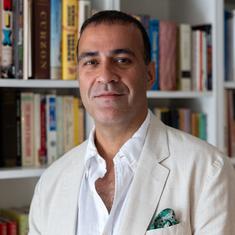United States, China agree on framework to ease trade tensions
The specifics of the framework were unclear, but Washington said the two countries had ‘pounded through’ matters dividing the world’s two largest economies.

The United States and China on Tuesday agreed on a framework to de-escalate trade tensions and remove restrictions on exports of rare earth minerals imposed by Beijing on the North American country, Reuters reported.
The specifics of the framework were unclear. The apparent breakthrough came nearly a month after both countries agreed to suspend tariffs on each other’s goods for 90 days.
However, the agreement reached in Geneva faltered due to China’s continued curbs on critical minerals exports, Reuters reported. Washington had responded with curbs that prevented shipments of semiconductor design software, aircraft and other goods to China.
Speaking to reporters after two days of discussions in London, US Commerce Secretary Howard Lutnick on Tuesday said that the framework reached with Beijing puts “meat on the bones” of the agreement reached on May 12 in Geneva to ease bilateral retaliatory tariffs.
Lutnick said that the two countries would work to implement the “Geneva consensus” and had “pounded through” all the matters dividing the world’s two largest economies, Al Jazeera reported.
The US commerce secretary added that the agreement would remove restrictions on Chinese exports of rare earth minerals and magnets, and some of the recent US export restrictions “in a balanced way”, according to Reuters.
Rare earth elements are a subset of critical minerals, comprising 17 elements in the periodic table starting with lanthanum. These minerals are crucial for the green energy transition.
China dominates the global rare earth minerals market, leading in reserves, production and exports.
Lutnick told reporters that both Washington and Beijing would go ahead with the framework after its approval by US President Donald Trump and Chinese President Xi Jinping. “Once the presidents approve it, we will then seek to implement it,” Reuters quoted Lutnick as saying.
In a separate briefing, Chinese Vice Commerce Minister Li Chenggang told reporters that the talks with Washington were “professional, rational, in-depth and candid”, Al Jazeera reported.
“The two sides will bring back and report to our respective leaders the talks in the meeting as well as the framework that was reached in principle,” Al Jazeera quoted Li as saying. “We hope that the progress we made in this London meeting is conducive to increasing trust between China and the US.”
The talks that were held in Geneva in May were the first face-to-face interaction between US and Chinese officials since Trump returned to power in January.
On April 2, the US announced “reciprocal” tariffs on dozens of countries, including a 26% “discounted” levy on India. Trump had repeatedly said he intended to impose a reciprocal tax on India, among others, citing the high tariffs the countries impose on foreign goods.
On April 9, the so-called reciprocal tariffs imposed by the US on several countries took effect.
Hours after, however, Trump reduced the tariff rates on imports from most countries to 10% for 90 days to provide time for trade negotiations. However, Washington had increased tariffs on China to 125% at the time.
The US president had cited the “lack of respect” Beijing had shown to the global markets for further increasing tariffs on imports from China.
As tensions increased, Washington eventually placed a 145% tariff on Chinese imports, while China retaliated with a 125% tariff on the US in addition to restrictions on exports of rare earth minerals to the North American country.









